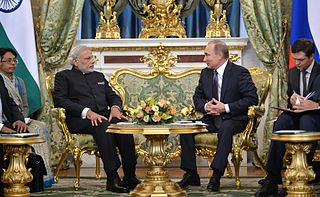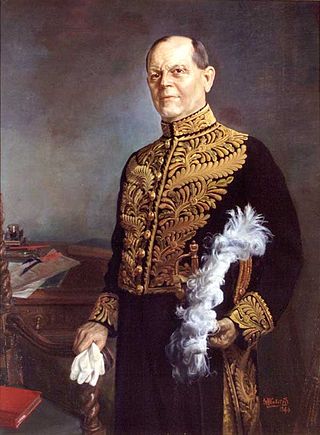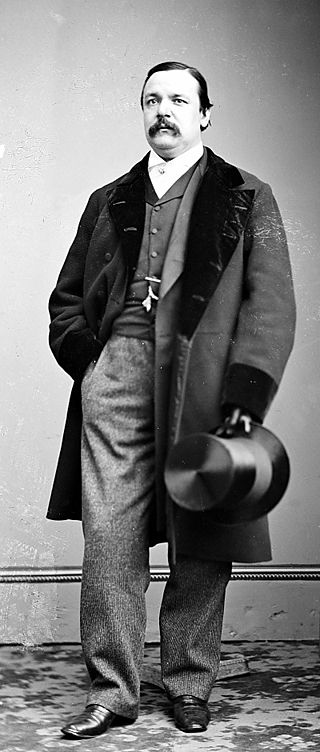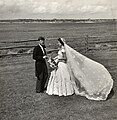
Black tie is a semi-formal Western dress code for evening events, originating in British and American conventions for attire in the 19th century. In British English, the dress code is often referred to synecdochically by its principal element for men, the dinner suit or dinner jacket. In American English, the equivalent term tuxedo is common. The dinner suit is a black, midnight blue or white two- or three-piece suit, distinguished by satin or grosgrain jacket lapels and similar stripes along the outseam of the trousers. It is worn with a white dress shirt with standing or turndown collar and link cuffs, a black bow tie, typically an evening waistcoat or a cummerbund, and black patent leather dress shoes or court pumps. Accessories may include a semi-formal homburg, bowler, or boater hat. For women, an evening gown or other fashionable evening attire may be worn.

A waistcoat, or vest, is a sleeveless upper-body garment. It is usually worn over a dress shirt and necktie and below a coat as a part of most men's formal wear. It is also sported as the third piece in the traditional three-piece male suit. Any given waistcoat can be simple or ornate, or for leisure or luxury. Historically, the waistcoat can be worn either in the place of, or underneath, a larger coat, dependent upon the weather, wearer, and setting.

White tie, also called full evening dress or a dress suit, is the most formal in traditional evening western dress codes. For men, it consists of a black tail coat worn over a white dress shirt with a starched or pique bib, white piqué waistcoat and the eponymous white bow tie worn around a standing wing collar. Mid or high-waisted black trousers with galon, a braid of trim consisting of two silk stripes to conceal the outer seams of the trousers, along with court shoes complete the outfit. Orders, decorations and medals may be worn. Acceptable accessories include a black top hat, white gloves, a white scarf, a pocket watch, a white pocket square, and a boutonnière. Women wear full-length ball or evening gowns with evening gloves and, optionally, tiaras, jewellery, and a small handbag.

A suit, lounge suit, or business suit is a set of clothes comprising a suit jacket and trousers of identical textiles worn with a collared dress shirt, necktie, and dress shoes. A skirt suit is similar, but with a matching skirt instead of trousers. It is considered informal wear in Western dress codes. The lounge suit originated in 19th-century Britain as a more casual alternative for sportswear and British country clothing, with roots in early modern Western Europe. After replacing the black frock coat in the early 20th century as regular daywear, a sober one-colored suit became known as a lounge suit.

A top hat is a tall, flat-crowned hat traditionally associated with formal wear in Western dress codes, meaning white tie, morning dress, or frock coat. Traditionally made of black silk or sometimes grey, the top hat emerged in Western fashion by the end of the 18th century. Although it declined by the time of the counterculture of the 1960s, it remains a formal fashion accessory. A collapsible variant of a top hat, developed in the 19th century, is known as an opera hat.
A tailcoat is a knee-length coat characterised by a rear section of the skirt, known as the tails, with the front of the skirt cut away.

Formal wear or full dress is the Western dress code category applicable for the most formal occasions, such as weddings, christenings, confirmations, funerals, Easter and Christmas traditions, in addition to certain state dinners, audiences, balls, and horse racing events. Formal wear is traditionally divided into formal day and evening wear, implying morning dress before 6 p.m., and white tie after 6 p.m. Generally permitted other alternatives, though, are the most formal versions of ceremonial dresses, full dress uniforms, religious clothing, national costumes, and most rarely frock coats. In addition, formal wear is often instructed to be worn with official full size orders and medals.

Mess dress uniform is the most formal type of uniforms used by military personnel, police personnel, and other uniformed services members. It frequently consists of a mess jacket, trousers, white dress shirt and a black bow tie, along with orders and medals insignia. Design may depend on regiment or service branch, e.g. army, navy, air force, marines, etc. In Western dress codes, mess dress uniform is the supplementary alternative equivalent to the civilian black tie for evening wear or black lounge suit for day wear although military uniforms are the same for day and evening wear. Mess dress uniforms are typically less formal than full dress uniform, but more formal than service dress uniform.

1860s fashion in European and European-influenced countries is characterized by extremely full-skirted women's fashions relying on crinolines and hoops and the emergence of "alternative fashions" under the influence of the Artistic Dress movement.

1870s fashion in European and European-influenced clothing is characterized by a gradual return to a narrow silhouette after the full-skirted fashions of the 1850s and 1860s.

A frock coat is a formal men's coat characterised by a knee-length skirt cut all around the base just above the knee, popular during the Victorian and Edwardian periods (1830s–1910s). It is a fitted, long-sleeved coat with a centre vent at the back and some features unusual in post-Victorian dress. These include the reverse collar and lapels, where the outer edge of the lapel is often cut from a separate piece of cloth from the main body and also a high degree of waist suppression around the waistcoat, where the coat's diameter round the waist is less than round the chest. This is achieved by a high horizontal waist seam with side bodies, which are extra panels of fabric above the waist used to pull in the naturally cylindrical drape. As was usual with all coats in the 19th century, shoulder padding was rare or minimal.

Morning dress, also known as formal day dress, is the formal Western dress code for day attire, consisting chiefly of, for men, a morning coat, waistcoat, and formal trousers, and an appropriate gown for women. Men may also wear a popular variant where all parts are the same colour and material, often grey and usually called "morning suit" or "morning grey" to distinguish it; considered properly appropriate only to festive functions such as summer weddings and horse races, which consequently makes it slightly less formal. The correct hat would be a formal top hat, or if on less spacious audience settings optionally a collapsible equivalent opera hat.

Court uniform and dress were required to be worn by those in attendance at the royal court in the 19th and early 20th centuries.

1880s fashion in the in Western and Western-influenced countries is characterized by the return of the bustle. The long, lean line of the late 1870s was replaced by a full, curvy silhouette with gradually widening shoulders. Fashionable waists were low and tiny below a full, low bust supported by a corset. The Rational Dress Society was founded in 1881 in reaction to the extremes of fashionable corsetry.
Western dress codes are a set of dress codes detailing what clothes are worn for what occasion. Conversely, since most cultures have intuitively applied some level equivalent to the more formal Western dress code traditions, these dress codes are simply a versatile framework, open to amalgamation of international and local customs. This versatility has made this scale of formality a practical international formality scale.

Informal wear or undress, also called business wear, corporate/office wear, tenue de ville or dress clothes, is a Western dress code for clothing defined by a business suit for men, and cocktail dress or pant suit for women. On the scale of formality, it is considered less formal than semi-formal wear but more formal than casual wear. Informal or undress should not be confused with casual wear such as business casual or smart casual; most situations calling for “informal wear” will usually tolerate casual dress to varying extents.

The black lounge suit (UK), stroller (U.S.), or Stresemann, is a men's day attire semi-formal intermediate of a formal morning dress and an informal lounge suit; comprising grey striped or checked formal trousers, but distinguished by a conventional-length lounge jacket, single- or double-breasted in black, midnight blue or grey. This makes it largely identical to the formal morning dress from which it is derived, only having exchanged the morning coat with a suit jacket, yet with equivalent options otherwise, such as necktie or bowtie for neckwear, a waistcoat, French cuffs dress shirt of optional collar type, and black dress shoes or dress boots. The correct hat would be a semi-formal homburg, bowler, or boater hat. Just as morning dress is considered the formal daytime equivalent of formal evening attire dress coat i e. white tie, so the stroller is considered the semi-formal daytime equivalent of the semi-formal evening attire dinner jacket, i.e. black tie. Unlike other dress codes, there is no clear equivalent for women, though typical morning dress and cocktail dress have both been identified as alternatives.

An over-frock coat is a formal overcoat designed to be worn over a frock coat if needed in cold weather. A top-frock coat may also be worn over a frock coat in milder weather. Shaped like the body coats popular in the Victorian and Edwardian periods, the over-frock coat was cut in essentially the same way as the frock coat that was worn under it, although it would be larger overall to accommodate the frock-coat worn underneath. Like the frock coat, the over-frock would typically be single-breasted, with step lapels for informal occasions like business, and double-breasted with pointed lapels for formal occasions – weddings, funerals, balls, etc. The top-frock was usually double breasted. The formal variety was sometimes called a Prince Albert overcoat. The Prince Albert top frock, from the later half of the 19th century, originally had a three-inch-wide velvet collar, and flap pockets at the hip, until 1893, when it became even more fitted, longer, and double-breasted.

Fashion in the period 1900–1909 in the Western world continued the severe, long and elegant lines of the late 1890s. Tall, stiff collars characterize the period, as do women's broad hats and full "Gibson Girl" hairstyles. A new, columnar silhouette introduced by the couturiers of Paris late in the decade signaled the approaching abandonment of the corset as an indispensable garment.
A man's suit of clothes, in the sense of a lounge or business or office suit, is a set of garments which are crafted from the same cloth. This article discusses the history of the lounge suit, often called a business suit when featuring dark colors and a conservative cut.


























